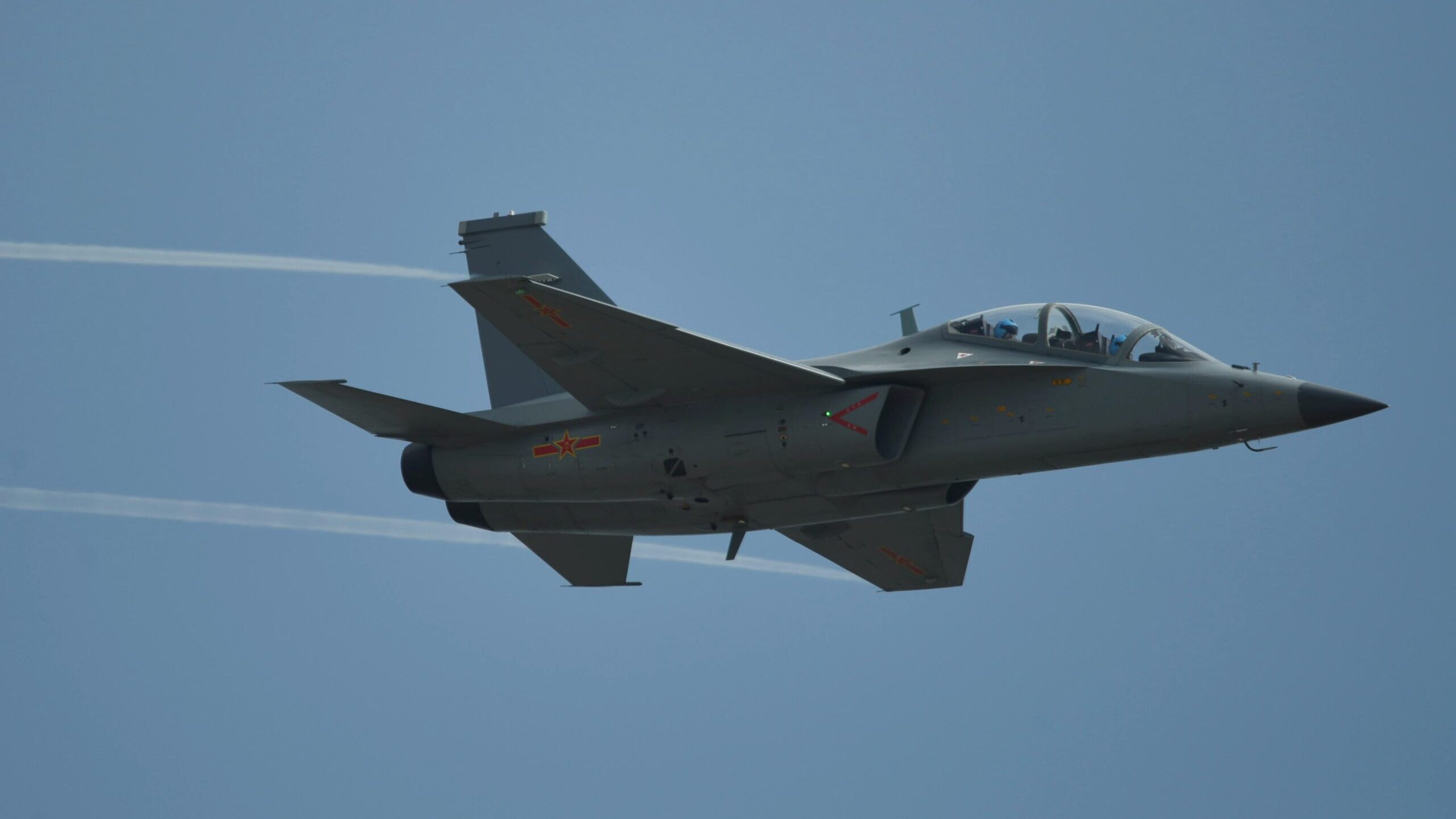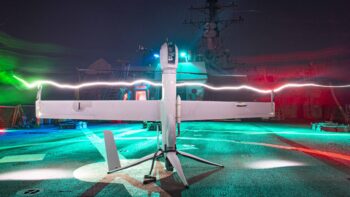
The Chinese Air Force’s trainer 10 (export model L15) performs a flight demonstration at the Zhuhai Air Show in Zhuhai, south China’s Guangdong Province, Nov. 10, 2022. (Photo credit should read CFOTO/Future Publishing via Getty Images)
BEIRUT — Chinese armed forces will hold the first ever military drills with United Arab Emirates in China this month, in a move that raised eyebrows for analysts as Washington and Beijing vie for influence in the Gulf.
Falcon Shield 2023, which will feature joint air force training for the two countries, will take place in Xinjiang in northwest China, a statement from the Chinese ministry of defense said Monday, “according to the annual plan and the consensus reached by China and the United Arab Emirates (UAE).”
The statement added that the training aims to deepen pragmatic exchanges and cooperation between the two militaries and enhance mutual understanding and trust, though it provided few details as to the exercise’s scope. The UAE ministry of defense did not respond to Breaking Defense’s request for comment as of publication.
Analysts told Breaking Defense it was difficult to say what the joint exercise means for the China-UAE relationship, but it’s hard not to read it as a “message” to the US, even if it was only the Chinese who made the announcement.
“This is a rather unfortunate development as the UAE seems to try to demonstrate to the US it has options. But it is highly likely that there is less here than meets the eye,” David Des Roches, associate professor at the Near East South Asia Center for Security Studies, told Breaking Defense.
RELATED: UAE conglomerate EDGE partners with China, US, unveils new homegrown capabilities
Retired Kuwaiti Colonel and defense analyst Zafer Al Ajami agreed.
“By joining an exercise with China, the UAE is delivering the second message to the US. UAE is assuring that it still has choices in managing [its] security the best way it can think of,” he said. The first message, he suggested, came in May when the UAE said it was withdrawing from a US-led maritime arrangement, though US officials disputed that at the time.
Whether a signal to Washington or not, UAE’s defense rapprochement to China has been evident not the least in defense shows in the Gulf nation, where Chinese firms have participated heavily not only with their defense platforms but also with the research and development of defense systems co-developed by the two countries through China-Emirates Science and Technology innovation laboratory (CEST), a joint project between UAE’s International Golden Group and Norinco.
RELATED: As US worries over Beijing’s influence in Middle East, Chinese defense firms flock to IDEX
At UMEX 2022, UAE’s Unmanned System Exhibition and conference, the Gulf state signed an agreement to procure 12 L-15 trainer jets from China’s National Aero-Technology Import and Export Corporation, with the possibility of increasing the quantity to 36.
From his point of view, Mohammed Baharoon, general director of B’huth, a Dubai-based public policy research center, said that the drills are part UAE’s strategic partnership with China but downplayed their greater geostrategic significance.
“UAE has bought defense equipment and share global threats with China. This is the reason why any two countries conduct [exercises],” he said, noting that the UAE also recently conducted joint drills with India and South Korea. “It’s a confidence-building measure.”
Al Ajami also suggested that at least for now, Beijing is not a viable alternative security partner in the region.
“It is hard for any country to replace the US presence in the region as a Gulf security guarantor,” he said.
The one impact the drills could have, Des Roches said, is additional wariness from the US about selling weapons to the UAE, should Washington view the emirates as getting too cozy with Washington’s rival.
The location of the exercise could also raise concerns in DC, he said, as Xinjiang is “where the US government has determined that a genocide of the Muslim Uighur population is underway. The fact that the leadership of a Muslim country would participate in military exercises in this country under such circumstances helps China normalize such behavior, even as it wipes out an ancient Muslim culture,” Des Roches commented.
As for what kind of equipment participates in the drill, Des Roches predicted any US or European equipment likely wouldn’t appear, as Western capitals have end-use restrictions on how their equipment is used even after sale.
“The most likely scenario is that only Chinese produced aircraft procured by the UAE — such as the Wing Loong drone — will be used in these exercises. The UAE’s Wing Loong has been in service since 2011, and carries Chinese provided air-to-surface missiles and bombs. It is likely that these will be exercised in Xianjiang,” he concluded.
China’s state-owned Global Times suggested the newly purchased L-15s would also be involved. The paper, citing Chinese analysts, said that as “military ties between China and the UAE continue to develop, there could be more joint exercises and arms deals,” perhaps the next will be in the UAE.
One of the analysts in the Global Times report said, in the paper’s paraphrasing, “China is not planning to fill the so-called power vacuum left by the US in the Middle East, but is enhancing cooperation with countries in the region, respecting their independent development, and helping safeguard regional peace and stability.”






















